Bollywood actor Salman Khan has pledged his support to Go India Foundation’s initiative of organising a blood donation camp in Pune on August 15. The foundation aims to collect 63,000 bottles of blood on the 63rd Independence Day.
According to a press note issued by the foundation, members of the Pune chapter of the organisation had met Salman at his Mumbai residence last Sunday and sought help for the cause. The actor not only agreed to lend a helping hand by endorsing the campaign, but also launched the donor T-shirts.
President of Go India Foundation’s Maharashtra chapter Mayuresh Phatak, Maharashtra Secretary Sarang Patharkar and Vikram Patil, president of the Pune chapter Jayraj Landage along with the chairperson of the organisation from Delhi Alka Lamba had met Salman.
“A nationwide blood donation drive will be held on August 15 over 250 districts. Our target is to provide India 100% safe voluntary blood, so that the need of replacement donation never arises,” said Lamba.
In Pune, blood donation camps will be held at SP College, Mahatma Phule Museum on Ghole Road, Bharati Vidyapeeth, MIT College at Kothrud and Azam Campus.
Source: IndianExpress
Sunday, August 15, 2010
Thursday, August 12, 2010
How to play with words - by Keith Sands
This paragraph is not ordinary. Look at it. At first, it won’t look too odd. Just a normal paragraph – you may think. But look at it again and you might find it a bit unusual. Just a tiny bit. What’s wrong with it, you may ask? Nothing wrong at all, in fact, as I said, it’s just slightly unusual. It’s difficult to put it in words. Look again. Is anything not right? Can you spot it? Is anything . . . missing?
What you’ve just read is a lipogram – a text written without using a particular letter of the alphabet. It's the hardest kind of lipogram, as it doesn’t contain the letter E – the most common letter in the English language. Try writing one yourself, even a few sentences, and you’ll see it's pretty difficult. Now imagine the task faced by the French writer Georges Perec, when a friend challenged him to write a whole novel without using E – a letter that is even more common in French than in English.
Perec was a frighteningly clever writer. He was a lover of word games and puzzles, and a master of the Chinese board game Go. He wrote crossword puzzles for Paris magazines. He had already written a 5,000 word palindrome – a text that reads the same forwards and back, like the well known ‘A man, a plan, a canal – Panama’. But his friends thought that this task would be beyond him. Indeed, they staked money on it.
Unlocking the imagination
He took up the challenge. He was unable to use more than 70 per cent of the words in the French language. The most common articles and pronouns, most of the French verb endings, and nearly every feminine noun were off-limits. Imagine a French writer not being able to use ‘une’, ‘le’, ‘je’, ‘elle’, ‘est’, or ‘et’. Surely enough to kill any writer’s ability to create.
But Perec was not just any writer. He discovered that, on the contrary, this ‘impossible’ rule unlocked his imagination. He later claimed that he wrote his novel faster than any of his other books. He was forced to think. He had to fight for every sentence. He had no choice but to be original.
The result was La Disparition, a surreal detective story about the mysterious disappearance of a character named A. Vowl. (Get it?) The only Es were the four in his name on the cover. He placed dozens of clues in the book about the fantastically difficult rule he was working under. (For example, the chapters are numbered one to 26, but there is no chapter five, E being the fifth letter of the alphabet.) Despite the clues, many of the original reviewers failed to spot what was staring them in their faces – the missing letter. Embarassing for the critics; hilarious for the writer and his friends.
Fortunately, the game Perec was playing did not destroy the book itself. It’s not just a novel without the letter E, it’s a good novel in its own right – very funny, if you know its secret; and rather disturbing if you don’t. Every sentence seems twisted slightly out of shape, and the resulting style is unique. It’s like chaos theory, which says that a butterfly’s wingbeat in South America might cause a hurricane in China. Remove a tiny thing – a single letter, that you’d hardly notice – and the whole world is changed.
After he finished his novel, Perec decided he needed to use up all the Es he hadn’t used in the novel, so he got rid of the As, Is, Os, and Us – and wrote a short story in which E is the only vowel.
Has anyone matched Perec? Probably only the British writer Gilbert Adair, who translated La Disparition into English. Again without using a single E. You could argue this is even more difficult than Perec’s original task, as Adair had to keep to the original story. Nevertheless, he managed it. Even the title was hard to translate: it couldn’t be called The Disappearance. The title of the English version is A Void, a play on words Perec himself would have enjoyed. ‘Avoid’, of course, is what the writer does when he writes a lipogram – avoiding all those nasty words with E in them.
Instant poetry
Perec was given his ‘impossible’ task by a fellow member of OuLiPo (Ouvroir de littérature potentielle – the Workshop of Potential Literature). This was a group of experimental writers in Paris in the 1960s, whose leading figures were Perec, Raymond Queneau, and the Italian Italo Calvino. The OuLiPo group developed the theory that writing under constraints and rules was a way to achieve true originality. Perec liked the paradox – the more you limit yourself, the freer you have to become.
Perec’s book is proof, perhaps, that this experiment works. But probably only if you’re brilliant in the first place. However, another of the OuLiPo word games is within everyone’s reach. Anyone can write an OuLiPo poem – all you need is a pen, paper and a dictionary.
Take a poem you like, or maybe one you don’t like, and underline all the nouns.
Look them up in the dictionary, count seven entries forward from the noun you started with and replace the word in the poem with the word you find. If it’s a verb, add ‘-ing’. So here are the first lines of Dante’s ‘Inferno’:
In the middle of the journey of my life
I found myself in a dark wood . . .
Which becomes:
In the midnight of the joy of my life insurance
I found mythology in a dark woodpile . . .
You now have an OuLiPo poem. It won’t make much sense, but it’ll probably have some surprising phrases in it you wouldn’t otherwise have thought of. If you don’t like it, change the adjectives as well. Then the verbs. It’s cheating, but it’s truly democratic. Anyone can be a poet – sort of. And it’s a lot easier than lipograms.
Vocabulary
Five words/phrases from the text:
- odd: peculiar or strange
- challenge: to invite somebody to engage in a contest
- stake: to risk something (such as money) on the result of a game
- critic: a person who evaluates creative work
- paradox: a statement that seems self contradictory
Vocabulary gap fill. Now use the five words/phrases to fill the gaps in the sentences below:
- Most of the reviews were good but one ………[1] said that his book was complicated and difficult to read.
- He decided to ………[2] his brother to a game of chess.
- He wanted to ………[3] all of his money on the game because he was sure he could win.
- She couldn’t live with him but she couldn’t live without him either; the situation was a ………[4]
- The main character of the film was an ………[5] little boy who was able to fly but unable to talk.
Comprehension: true or false. Decide whether these sentences are TRUE or FALSE according to the text:
- Perec’s friends knew he could write a novel without using E.
- Perec could use only fewer than half the words in the French language.
- Perec found the experience made him more creative.
- The critics were told in advance about Perec’s difficult rule’.
- If you don’t notice the missing Es, the novel does not seem strange.
Vocabulary
- critic
- challenge
- stake
- paradox
- odd
- False
- True
- True
- False
- False
Source: Britishcouncil.org
Tuesday, August 10, 2010
50 Summer Drinks
1. PB Frappe
Puree 1/4 cup peanut butter with 1 cup milk. Pour some chocolate syrup into a glass; top with the peanut-butter milk. Slowly add seltzer and stir.
2. Vietnamese Iced Coffee
Pour 3 tablespoons sweetened condensed milk over ice; stir in 1 cup cooled strong coffee.
3. Honeydew Ice
Puree 1 cup each frozen honeydew melon and frozen diced cucumber with the juice of 1 lime and some sugar.
4. Sake Spritzer
Combine 1 basil leaf, 6 mint leaves, 2 lemon twists, 1 orange wedge, 1/4 cup diced cucumber and 1 1/2 ounces orange liqueur in a shaker with ice; shake. Pour into a glass and top with sparkling sake.
5. Peach-Ginger Iced Tea
Mash 6 canned peach halves with 1 1/2 cups of the juice, 1/3 cup sugar and 1 tablespoon grated ginger in a pitcher. Add ice and 6 cups cold English breakfast tea.
6. Pineapple Rummy
Fill a glass partway with sparkling cider and ice. Add a shot of dark rum and a few pineapple chunks.
7. Concord Cow
Scoop some vanilla ice cream into a glass. Mix equal parts concord grape juice and lemon-lime soda, then slowly pour over the ice cream.
8. Real-Man's Margarita
Salt the rim of a beer mug; fill with ice. Add Mexican beer, a squeeze of lime juice, a splash of tequila and hot sauce to taste.
Mash 6 canned peach halves with 1 1/2 cups of the juice, 1/3 cup sugar and 1 tablespoon grated ginger in a pitcher. Add ice and 6 cups cold English breakfast tea.
6. Pineapple Rummy
Fill a glass partway with sparkling cider and ice. Add a shot of dark rum and a few pineapple chunks.
7. Concord Cow
Scoop some vanilla ice cream into a glass. Mix equal parts concord grape juice and lemon-lime soda, then slowly pour over the ice cream.
8. Real-Man's Margarita
Salt the rim of a beer mug; fill with ice. Add Mexican beer, a squeeze of lime juice, a splash of tequila and hot sauce to taste.
9. Cherry Cooler
Puree 1/2 pound pitted cherries, 1/2 cup sugar and 1 cup strong hibiscus tea. Serve over ice and garnish with cherries.
10. Agua Fresca
Puree 2 unpeeled cucumbers, the juice of 2 limes, 3 tablespoons sugar, 1 cup water and 1/4 serrano pepper; strain. Serve over ice.
11. Elderflower Fizz
Fill a glass halfway with ice and cranberry juice. Add a splash each of vodka and elderflower liqueur; top with seltzer and garnish with mint.
12. Tequila Paloma
Pour a shot of tequila into an ice-filled glass; top with grapefruit soda.
13. Guava Green Tea
Pour equal parts guava juice and green tea over ice; garnish with lemon.
14. Lychee Sparkler
Puree half the lychees from a 20-ounce can with all the syrup; strain. Mix with 2 1/2 cups Lillet and a few dashes of rose water and bitters.
15. Kiwi Punch
Puree 7 peeled, cubed kiwis with 1/2 cup sugar, the juice of 2 limes and 1 cup water; strain and serve over ice.
16. Bull's-Eye Brew
Mix equal parts tomato juice and pale ale. Serve on ice with lime wedges.
17. Strawberry Limeade
Make simple syrup: Dissolve 1 cup sugar in 1 cup water in a saucepan over low heat; let cool. Combine with 1 cup lime juice, 2 cups water, some frozen chopped strawberries and ice.
18. Pimm's Ginger Cup
Pour 2 ounces Pimm's No. 1 over ice. Squeeze in a lemon wedge; top with ginger ale and garnish with a cucumber stick.
19. Iced Chai
Brew 6 black tea bags in 4 cups water with a 1-inch piece ginger and 2 teaspoons Chai spice blend. Cool, remove tea bags and ginger and stir in 1/4 cup honey. Serve over ice with sweetened condensed milk.
20. Fruity Protein Shake
Puree 2 ounces silken tofu, 1 cup frozen fruit, 1/4 cup fruit juice, 1/2 cup soy milk and a little honey.
21. Russian Cherry Soda
Bring 1 cup water, 1 cup sugar and 1 cup pitted cherries to a boil and cook until syrupy; stir into seltzer.
22. Lavender-Peach Cooler
Make half a batch of simple syrup (see No. 17), adding 1/4 cup dried lavender to the hot syrup; let cool. Puree 1/2 cup of the syrup with 1½ pounds peaches and 1 cup water; strain. Stir in lemon juice and serve on the rocks.
23. Go-To Margarita
Shake 3 ounces tequila, 2 ounces lime juice, 1 ounce simple syrup (see No. 17) and ice in a shaker. Strain into an ice-filled glass.
24. Apricot Sun Tea
Steep 4 bags orange pekoe tea in 4 cups cold water in a sunny spot for several hours. Stir in 2 cups apricot nectar, 1/4 cup simple syrup (see No. 17), the juice of 1 lemon, 1 teaspoon vanilla extract and 1 cup fresh mint; chill.
25. Instant Horchata
Sweeten rice milk with sugar; add a pinch of cinnamon. Serve over ice with diced cantaloupe and pecans.
Puree 1/2 pound pitted cherries, 1/2 cup sugar and 1 cup strong hibiscus tea. Serve over ice and garnish with cherries.
10. Agua Fresca
Puree 2 unpeeled cucumbers, the juice of 2 limes, 3 tablespoons sugar, 1 cup water and 1/4 serrano pepper; strain. Serve over ice.
11. Elderflower Fizz
Fill a glass halfway with ice and cranberry juice. Add a splash each of vodka and elderflower liqueur; top with seltzer and garnish with mint.
12. Tequila Paloma
Pour a shot of tequila into an ice-filled glass; top with grapefruit soda.
13. Guava Green Tea
Pour equal parts guava juice and green tea over ice; garnish with lemon.
14. Lychee Sparkler
Puree half the lychees from a 20-ounce can with all the syrup; strain. Mix with 2 1/2 cups Lillet and a few dashes of rose water and bitters.
15. Kiwi Punch
Puree 7 peeled, cubed kiwis with 1/2 cup sugar, the juice of 2 limes and 1 cup water; strain and serve over ice.
16. Bull's-Eye Brew
Mix equal parts tomato juice and pale ale. Serve on ice with lime wedges.
17. Strawberry Limeade
Make simple syrup: Dissolve 1 cup sugar in 1 cup water in a saucepan over low heat; let cool. Combine with 1 cup lime juice, 2 cups water, some frozen chopped strawberries and ice.
18. Pimm's Ginger Cup
Pour 2 ounces Pimm's No. 1 over ice. Squeeze in a lemon wedge; top with ginger ale and garnish with a cucumber stick.
19. Iced Chai
Brew 6 black tea bags in 4 cups water with a 1-inch piece ginger and 2 teaspoons Chai spice blend. Cool, remove tea bags and ginger and stir in 1/4 cup honey. Serve over ice with sweetened condensed milk.
20. Fruity Protein Shake
Puree 2 ounces silken tofu, 1 cup frozen fruit, 1/4 cup fruit juice, 1/2 cup soy milk and a little honey.
21. Russian Cherry Soda
Bring 1 cup water, 1 cup sugar and 1 cup pitted cherries to a boil and cook until syrupy; stir into seltzer.
22. Lavender-Peach Cooler
Make half a batch of simple syrup (see No. 17), adding 1/4 cup dried lavender to the hot syrup; let cool. Puree 1/2 cup of the syrup with 1½ pounds peaches and 1 cup water; strain. Stir in lemon juice and serve on the rocks.
23. Go-To Margarita
Shake 3 ounces tequila, 2 ounces lime juice, 1 ounce simple syrup (see No. 17) and ice in a shaker. Strain into an ice-filled glass.
24. Apricot Sun Tea
Steep 4 bags orange pekoe tea in 4 cups cold water in a sunny spot for several hours. Stir in 2 cups apricot nectar, 1/4 cup simple syrup (see No. 17), the juice of 1 lemon, 1 teaspoon vanilla extract and 1 cup fresh mint; chill.
25. Instant Horchata
Sweeten rice milk with sugar; add a pinch of cinnamon. Serve over ice with diced cantaloupe and pecans.
Blend 8 cups frozen cubed watermelon with 8 ounces lemon vodka, 7 ounces simple syrup (see No. 17) and a 17.5-ounce can coconut juice. Serve with watermelon wedges.
27. Orange-Berry Daiquiri
Puree 2 cups crushed ice, 1 cup sliced strawberries, 4 ounces light rum, 1 ounce orange liqueur, 2 ounces lime juice and 1 tablespoon superfine sugar. Pour into 2 glasses.
28. Virgin Daiquiri
Swap the alcohol in the above recipe for 1/2 cup fresh orange juice.
29. Derby Martini
Shake 1 1/2 ounces bourbon, 1/4 ounce Lillet, 1/2 ounce cherry brandy, 1 teaspoon lemon juice, a dash of bitters and ice in a shaker; strain into a martini glass.
30. Old Cuban
Muddle a handful of mint leaves in a shaker with 1 1/2 ounces rum, the juice of 1 lime, 1 ounce simple syrup (see No. 17) and 2 dashes bitters. Shake with ice; strain into a flute and top with champagne.
31. Berry-Guava Lemonade
Mash 4 diced strawberries with 2 tablespoons sugar and 4 tablespoons guava juice in a glass. Fill with ice, then add 6 tablespoons lemon juice and lemon slices.
32. Cherry-Lime Rickey
Mash 6 pitted cherries, 3 lime wedges and 2 teaspoons sugar in a glass. Add 3 ounces gin and ice.
33. Blueberry Slush
Puree 4 ounces tequila, 2 ounces blue curaçao, 1/2 cup blueberries, the juice of 3 limes, 1 tablespoon sugar and 3 cups ice until slushy; pour into 2 sugar-rimmed margarita glasses.
34. Ginger Shandy
Mix equal parts ginger ale and pale ale; serve on the rocks.
35. Chocolate-Cherry Shake
Puree 1 cup softened vanilla ice cream, 1/4 cup milk, 1/2 cup frozen cherries and 8 chocolate wafers.
36. Pink & Green Aperitif
Mix 2 parts Aperol and 1 part vodka with muddled lime wedges and pink grapefruit juice. Garnish with raspberries.
37. Vir-Gin & Tonic
Crush 2 tablespoons juniper berries with 2 tablespoons fresh mint. Add 1 cup tonic; steep for 20 minutes, then strain. Serve on ice; top with tonic and 2 dashes bitters.
Mash 4 diced strawberries with 2 tablespoons sugar and 4 tablespoons guava juice in a glass. Fill with ice, then add 6 tablespoons lemon juice and lemon slices.
32. Cherry-Lime Rickey
Mash 6 pitted cherries, 3 lime wedges and 2 teaspoons sugar in a glass. Add 3 ounces gin and ice.
33. Blueberry Slush
Puree 4 ounces tequila, 2 ounces blue curaçao, 1/2 cup blueberries, the juice of 3 limes, 1 tablespoon sugar and 3 cups ice until slushy; pour into 2 sugar-rimmed margarita glasses.
34. Ginger Shandy
Mix equal parts ginger ale and pale ale; serve on the rocks.
35. Chocolate-Cherry Shake
Puree 1 cup softened vanilla ice cream, 1/4 cup milk, 1/2 cup frozen cherries and 8 chocolate wafers.
36. Pink & Green Aperitif
Mix 2 parts Aperol and 1 part vodka with muddled lime wedges and pink grapefruit juice. Garnish with raspberries.
37. Vir-Gin & Tonic
Crush 2 tablespoons juniper berries with 2 tablespoons fresh mint. Add 1 cup tonic; steep for 20 minutes, then strain. Serve on ice; top with tonic and 2 dashes bitters.
38. Smoky Creamsicle Float
Scoop some vanilla ice cream into a glass; add 1 ounce mezcal and 6 ounces orange soda.
39. Raspberry Egg Cream
Puree 1/4 cup raspberry jam with 1 cup milk. Place 1 tablespoon jam in a glass. Top with the raspberry milk and seltzer; stir.
40. Pink Lemonade
Boil 1/2 cup sugar, 1/2 cup water and 1 cup raspberries; let cool. Strain into a pitcher, then stir in 1/2 cup lemon juice, 1 cup cold water and ice.
41. Melon Sangria
Mix 1 bottle white wine, 1/2 cup green melon liqueur, the juice of 3 limes and 1/4 cup sugar in a pitcher; chill. Garnish with melon balls.
42. Cucumber Water
Combine 1 gallon ice water, 1 sliced lemon and 1/2 sliced cucumber; chill.
Scoop some vanilla ice cream into a glass; add 1 ounce mezcal and 6 ounces orange soda.
39. Raspberry Egg Cream
Puree 1/4 cup raspberry jam with 1 cup milk. Place 1 tablespoon jam in a glass. Top with the raspberry milk and seltzer; stir.
40. Pink Lemonade
Boil 1/2 cup sugar, 1/2 cup water and 1 cup raspberries; let cool. Strain into a pitcher, then stir in 1/2 cup lemon juice, 1 cup cold water and ice.
41. Melon Sangria
Mix 1 bottle white wine, 1/2 cup green melon liqueur, the juice of 3 limes and 1/4 cup sugar in a pitcher; chill. Garnish with melon balls.
42. Cucumber Water
Combine 1 gallon ice water, 1 sliced lemon and 1/2 sliced cucumber; chill.
43. Bluetini
Drizzle 2 teaspoons blue curaçao into a chilled martini glass; add 2 dashes orange bitters. Shake a shot of blueberry vodka with ice in a shaker, then strain into the glass; garnish with blueberries.
44. Boozy Cherry Pop
Pour 2 ounces each cherry syrup and gin over ice; add a splash of seltzer. Float a layer of red wine on top by pouring over the back of a spoon; garnish with a maraschino cherry.
45. Rosemary Gin & Tonic
Mash a lime wedge with 4 cucumber slices in a glass. Add 2 ounces gin, a sprig of rosemary and some ice; top with tonic.
46. Caramel-Java Freeze
Puree 1/2 cup espresso, 1/2 cup milk, 2 tablespoons each caramel sauce and sugar and 1 cup crushed ice. Pour into 2 glasses; top with whipped cream and caramel.
47. Champagne Punch
Mix 1 bottle champagne, 2 cups seltzer, 1 cup peach nectar and 1/2 cup brandy in a punch bowl; add sliced peaches and berries.
48. Raspberry Shrub
Fill a jar with raspberries; cover with cider vinegar and steep overnight. Strain into a saucepan and add 1 cup sugar per 1 cup liquid; boil 15 minutes, then cool. Combine 3 tablespoons shrub in a glass with ice, lime juice and seltzer.
49. Ginger Juice
Soak 1 cup grated ginger in 8 cups water overnight. Add 1 cup sugar; simmer 1 hour, strain and chill. Stir in a dash of almond extract and serve over ice; top with seltzer.
50. White-Grape Spritzer
Mix equal parts white grape juice and lemon-lime soda; serve over ice with sliced fruit.
Drizzle 2 teaspoons blue curaçao into a chilled martini glass; add 2 dashes orange bitters. Shake a shot of blueberry vodka with ice in a shaker, then strain into the glass; garnish with blueberries.
44. Boozy Cherry Pop
Pour 2 ounces each cherry syrup and gin over ice; add a splash of seltzer. Float a layer of red wine on top by pouring over the back of a spoon; garnish with a maraschino cherry.
45. Rosemary Gin & Tonic
Mash a lime wedge with 4 cucumber slices in a glass. Add 2 ounces gin, a sprig of rosemary and some ice; top with tonic.
46. Caramel-Java Freeze
Puree 1/2 cup espresso, 1/2 cup milk, 2 tablespoons each caramel sauce and sugar and 1 cup crushed ice. Pour into 2 glasses; top with whipped cream and caramel.
47. Champagne Punch
Mix 1 bottle champagne, 2 cups seltzer, 1 cup peach nectar and 1/2 cup brandy in a punch bowl; add sliced peaches and berries.
48. Raspberry Shrub
Fill a jar with raspberries; cover with cider vinegar and steep overnight. Strain into a saucepan and add 1 cup sugar per 1 cup liquid; boil 15 minutes, then cool. Combine 3 tablespoons shrub in a glass with ice, lime juice and seltzer.
49. Ginger Juice
Soak 1 cup grated ginger in 8 cups water overnight. Add 1 cup sugar; simmer 1 hour, strain and chill. Stir in a dash of almond extract and serve over ice; top with seltzer.
50. White-Grape Spritzer
Mix equal parts white grape juice and lemon-lime soda; serve over ice with sliced fruit.
Sunday, August 8, 2010
Crazy Airplane Hotel Room Conversion in Costa Rica

Photograph by Vincent Costello
Located on a coastal rainforest bluff overlooking the Pacific, Hotel Costa Verde near Quepos, Costa Rica, features one of the most unique hotel rooms I’ve ever encountered. A two bedroom, fully retrofitted, vintage 1965 Boeing 727 fuselage, available on your next vacation! Check out the incredible pics and information below on this one-of-a-kind lodging.

Photograph by Vincent Costello
HISTORY OF THE PLANE
- A refurbished, vintage 1965 Boeing 727 airframe, which originally shuttled globetrotters on South Africa Air and Avianca Airlines (Colombia)
- Salvaged the airframe, piece by piece, from its San Jose airport resting place. Each piece was carefully transported on five, big-rig trucks to the jungles of Manuel Antonio
- Plane is now nestled on the edge of the National Park perched on a 50-foot pedestal. At this height, you can enjoy scenic ocean and jungle views from the hard wood deck built atop the plane’s former right wing
- Salvaged the airframe, piece by piece, from its San Jose airport resting place. Each piece was carefully transported on five, big-rig trucks to the jungles of Manuel Antonio
- Plane is now nestled on the edge of the National Park perched on a 50-foot pedestal. At this height, you can enjoy scenic ocean and jungle views from the hard wood deck built atop the plane’s former right wing
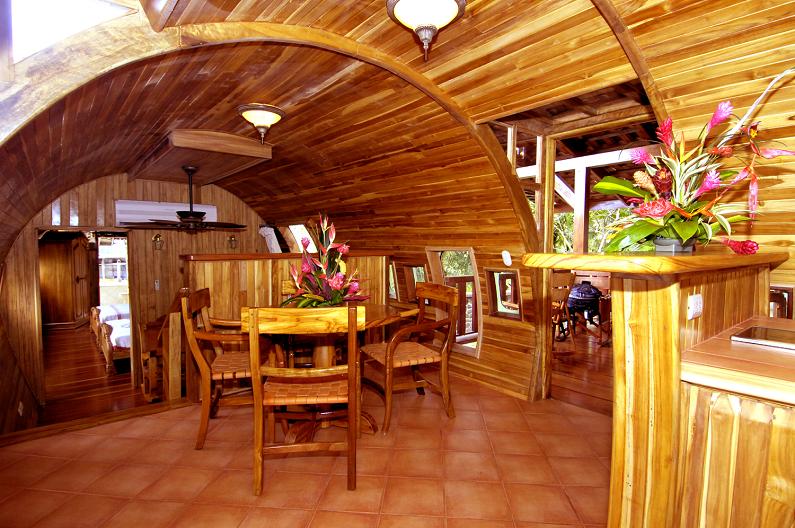
Photograph by Vincent Costello
AIRPLANE HOTEL ROOM INTERIOR
- The plane’s interior is Costa Rican teak paneling from the cockpit to the tail
- Furnishings are hand-carved, teak furniture from Java, Indonesia
- The vintage 727 home features two air conditioned bedrooms one with two queen sized beds and the other with one queen sized bed, each with its own private bathroom
- Additional amenities include: flat screen TV, kitchenette, dining area foyer, an ocean view terrace, private entrance up a river rock, a spiral staircase, and 360 degree views of surrounding gardens
- Common treetop neighbours include: sloths, toucans and monkeys
- Furnishings are hand-carved, teak furniture from Java, Indonesia
- The vintage 727 home features two air conditioned bedrooms one with two queen sized beds and the other with one queen sized bed, each with its own private bathroom
- Additional amenities include: flat screen TV, kitchenette, dining area foyer, an ocean view terrace, private entrance up a river rock, a spiral staircase, and 360 degree views of surrounding gardens
- Common treetop neighbours include: sloths, toucans and monkeys
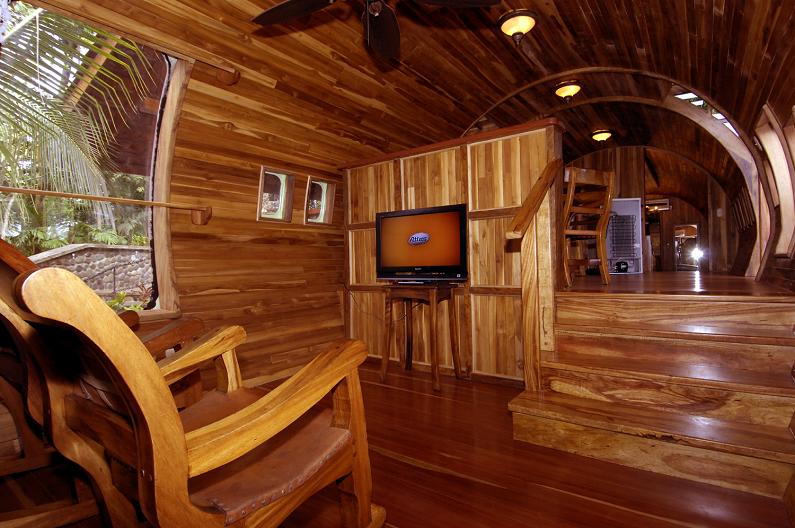
Photograph by Vincent Costello
EXECUTIVE 727 SUITE RATES
Summer Season | $500 plus tax - Jan 02, 2010 - April 30, 2010
Green Season | $400 plus tax - May 01, 2010 - Nov 18, 2010
Summer Season | $500 plus tax - Nov 19, 2010 - Dec 22, 2010
Christmas Season | $700 plus tax - Dec 23, 2010 - Jan 01, 2011
Summer Season | $500 plus tax - Jan 02, 2011 - April 30, 2011
Green Season | $400 plus tax - May 01, 2011 - Nov 19, 2011
Green Season | $400 plus tax - May 01, 2010 - Nov 18, 2010
Summer Season | $500 plus tax - Nov 19, 2010 - Dec 22, 2010
Christmas Season | $700 plus tax - Dec 23, 2010 - Jan 01, 2011
Summer Season | $500 plus tax - Jan 02, 2011 - April 30, 2011
Green Season | $400 plus tax - May 01, 2011 - Nov 19, 2011

Photograph by Vincent Costello
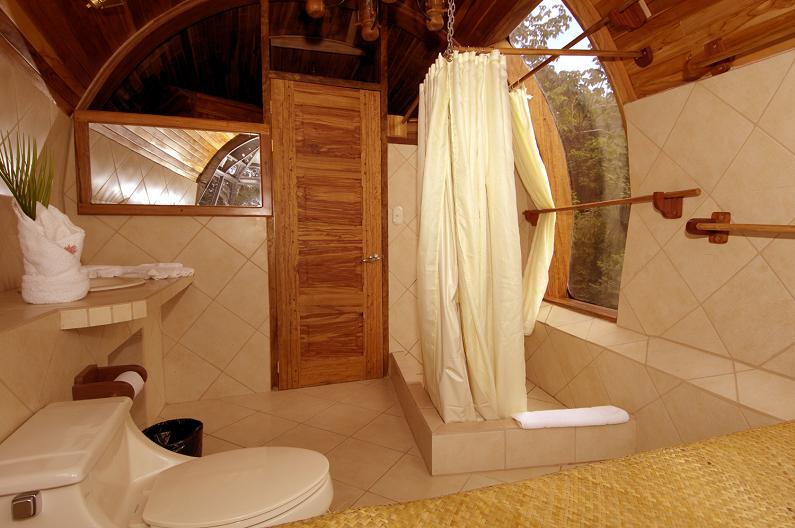
Photograph by Vincent Costello

Photograph by Vincent Costello
HOTEL CASA VERDE
- Hotel Costa Verde is located three hundred yards from the beach and Manuel Antonio National Park
- It features two cliffside pools with sundecks and spacious rooms and balconies, all offering a bird’s-eye view of the Park’s coastline plus rainforest canopy vistas dotted with native birds and monkeys
- Costa Verde offers accommodations for a variety of options for vacation living, including air conditioned studio apartments with cable TV, and Costa Verde II, a special group of 15 studios designed exclusively for couples with an open-air design and no air conditioning, glass windows or TV
- In addition, they have bungalows available for vacationers interested in renting a private house. Each area has its own swimming pool and vistas
- It features two cliffside pools with sundecks and spacious rooms and balconies, all offering a bird’s-eye view of the Park’s coastline plus rainforest canopy vistas dotted with native birds and monkeys
- Costa Verde offers accommodations for a variety of options for vacation living, including air conditioned studio apartments with cable TV, and Costa Verde II, a special group of 15 studios designed exclusively for couples with an open-air design and no air conditioning, glass windows or TV
- In addition, they have bungalows available for vacationers interested in renting a private house. Each area has its own swimming pool and vistas
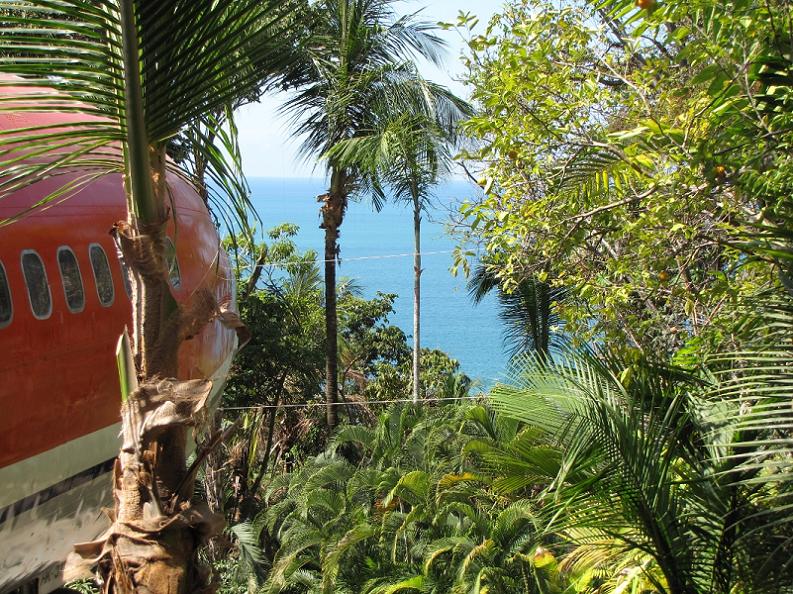
Photograph by Vincent Costello
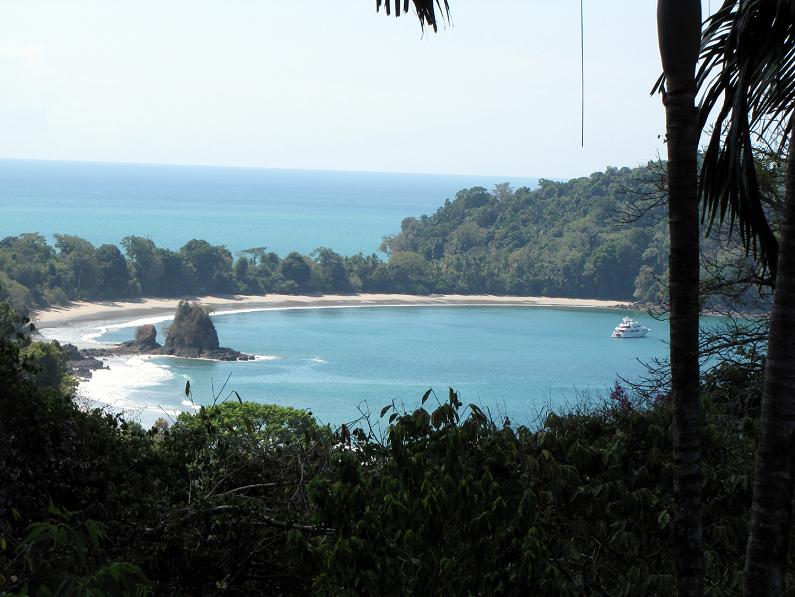
Photograph by Vincent Costello
Wednesday, August 4, 2010
How to stop cough in 5 minutes
This is a must try....
We have all been kept awake by our own or someone else's cough. Try this and pass it on. The tip and not the cough. ANYTHING is betterthan antibiotics. Even babies could benefit from this and the parents wouldn't worry about the safety of their child. And of course, it is harmless and free from any type of side-effects.
WOW! I was raised, and raised my kids with Vicks. How come I never knew this? I can't wait for my next cough. Amazing!
READ IT ALL. It works 100 percent of the time, although the scientists at the Canada Research council (who discovered it) aren't sure why.
Treatment:
To stop night time coughing in a child (or an adult, as we found out personally), put Vicks Vapor Rub generously on the bottom of the feet at bedtime and then cover with socks.
Even persistent, heavy, deep coughing will stop in about five minutes and stay stopped for many, many hours of relief. This works 100 percent of the time, and is more effective in children than even very strong prescription cough medicines. In addition it is extremely soothing and comforting and they will sleep soundly. I heard the head of the Canada Research Council describe these findings on the part of their scientists when they were investigating the effectiveness and usage of prescription cough medicines in children, as compared to alternative therapies like acupressure. I just happened to tune in to a.m. Radio and picked up this guy talking about why cough medicines in kids often do more harm than good due to the chemical makeup of these strong drugs, so I listened. It was a surprising finding and found to be more effective than prescribed medicines for children at bedtime, and in addition to have a soothing and calming effect on sick children who then went on to sleep soundly.
My friend tried it on herself when she had a very deep constant and persistent cough a few weeks ago, and it worked 100 percent! She said it felt like a warm blanket had enveloped her. The coughing stopped in a few minutes, and believe me this was a deep (incredibly annoying!) every few seconds, uncontrollable cough and she slept cough-free for hours every night she used it.
If you have children or grandchildren, pass it on. If you end up sick, try it yourself and you will be absolutely amazed.
How to stop cough in 5 minutes!!! This is a must try...
Sunday, August 1, 2010
Top 9 Amazing Facts About Dreams
This afternoon I had a (very rare) nap. During that nap I had a lucid dream (most of which I no longer remember). As I was waking up, I was thinking about my dream and thought that it would be a great idea to write a list about dreams for the site. So, here are the top 10 amazing facts about dreams.
9. Blind People Dream
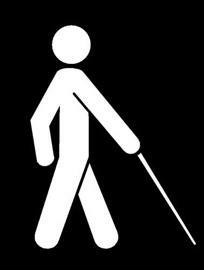
People who become blind after birth can see images in their dreams. People who are born blind do not see any images, but have dreams equally vivid involving their other senses of sound, smell, touch and emotion. It is hard for a seeing person to imagine, but the body’s need for sleep is so strong that it is able to handle virtually all physical situations to make it happen.
8. You Forget 90% of your Dreams
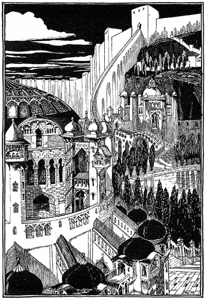
Within 5 minutes of waking, half of your dream if forgotten. Within 10, 90% is gone. The famous poet, Samuel Taylor Coleridge, woke one morning having had a fantastic dream (likely opium induced) - he put pen to paper and began to describe his “vision in a dream” in what has become one of English’s most famous poems: Kubla Khan. Part way through (54 lines in fact) he was interrupted by a “Person from Porlock“. Coleridge returned to his poem but could not remember the rest of his dream. The poem was never completed.
In Xanadu did Kubla Khan
A stately pleasure-dome decree:
Where Alph, the sacred river, ran
Through caverns measureless to man
Down to a sunless sea.
[…]
Curiously, Robert Louis Stevenson came up with the story of Doctor Jeckyll and Mr. Hyde whilst he was dreaming. Wikipedia has more on that here. Mary Shelley’s Frankenstein was also the brainchild of a dream.A stately pleasure-dome decree:
Where Alph, the sacred river, ran
Through caverns measureless to man
Down to a sunless sea.
[…]
7. Everybody Dreams
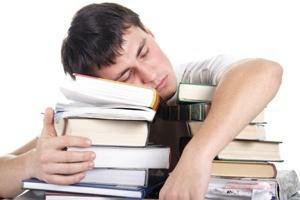
Every human being dreams (except in cases of extreme psychological disorder) but men and women have different dreams and different physical reactions. Men tend to dream more about other men, while women tend to dream equally about men and women. In addition, both men and women experience sexually related physical reactions to their dreams regardless of whether the dream is sexual in nature; males experience erections and females experience increased vaginal blood flow.
6. Dreams Prevent Psychosis
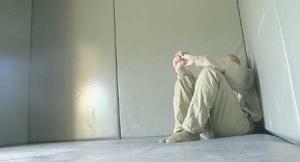
In a recent sleep study, students who were awakened at the beginning of each dream, but still allowed their 8 hours of sleep, all experienced difficulty in concentration, irritability, hallucinations, and signs of psychosis after only 3 days. When finally allowed their REM sleep the student’s brains made up for lost time by greatly increasing the percentage of sleep spent in the REM stage.
5. Not Everyone Dreams in Color

A full 12% of sighted people dream exclusively in black and white. The remaining number dream in full color. People also tend to have common themes in dreams, which are situations relating to school, being chased, running slowly/in place, sexual experiences, falling, arriving too late, a person now alive being dead, teeth falling out, flying, failing an examination, or a car accident. It is unknown whether the impact of a dream relating to violence or death is more emotionally charged for a person who dreams in color than one who dreams in black and white.
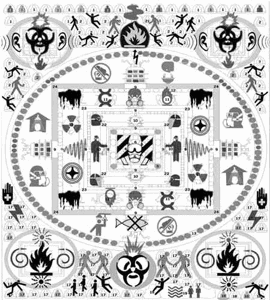
4. Dreams are not about what they are about
If you dream about some particular subject it is not often that the dream is about that. Dreams speak in a deeply symbolic language. The unconscious mind tries to compare your dream to something else, which is similar. Its like writing a poem and saying that a group of ants were like machines that never stop. But you would never compare something to itself, for example: “That beautiful sunset was like a beautiful sunset”. So whatever symbol your dream picks on it is most unlikely to be a symbol for itself.
3. Quitters have more vivid dreams

People who have smoked cigarettes for a long time who stop, have reported much more vivid dreams than they would normally experience. Additionally, according to the Journal of Abnormal Psychology: “Among 293 smokers abstinent for between 1 and 4 weeks, 33% reported having at least 1 dream about smoking. In most dreams, subjects caught themselves smoking and felt strong negative emotions, such as panic and guilt. Dreams about smoking were the result of tobacco withdrawal, as 97% of subjects did not have them while smoking, and their occurrence was significantly related to the duration of abstinence. They were rated as more vivid than the usual dreams and were as common as most major tobacco withdrawal symptoms.”
2. External Stimuli Invade our Dreams
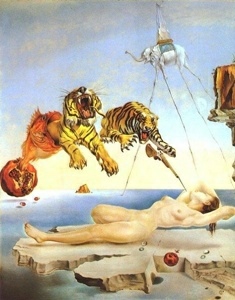
This is called Dream Incorporation and it is the experience that most of us have had where a sound from reality is heard in our dream and incorporated in some way. A similar (though less external) example would be when you are physically thirsty and your mind incorporates that feeling in to your dream. My own experience of this includes repeatedly drinking a large glass of water in the dream which satisfies me, only to find the thirst returning shortly after - this thirst… drink… thirst… loop often recurs until I wake up and have a real drink. The famous painting above (Dream Caused by the Flight of a Bee around a Pomegranate a Second Before Awakening) by Salvador Dali, depicts this concept.
1. You are paralyzed while you sleep
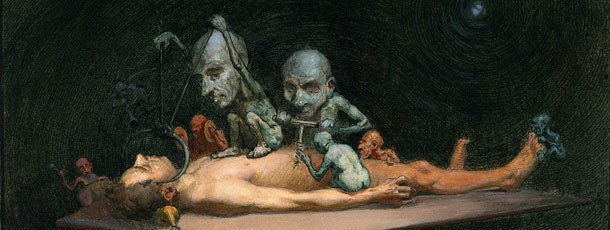
Believe it or not, your body is virtually paralyzed during your sleep - most likely to prevent your body from acting out aspects of your dreams. According to the Wikipedia article on dreaming, “Glands begin to secrete a hormone that helps induce sleep and neurons send signals to the spinal cord which cause the body to relax and later become essentially paralyzed.”
Bonus: Extra Facts
1. Toddlers do not dream about themselves until around the age of 3. From the same age, children typically have many more nightmares than adults do until age 7 or 8.
2. If you are awakened out of REM (Rapid Eye Movement) sleep, you are more likely to remember your dream in a more vivid way than you would if you woke from a full night sleep.
7 Scientifically Proven Ways To Stimulate Brain Cell Growth/ Neurogenesis
Neurogenesis - “The birth of new neurons in the brain; also referred to as the process in which neurons are created.”
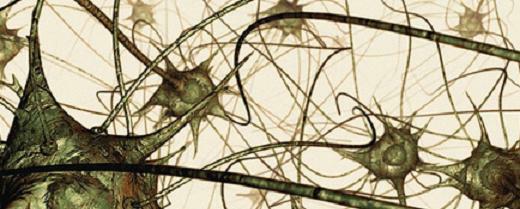 The growth of new brain cells occurs in the region of the brain called the “hippocampus.” The ‘hippocampus’ is an area involved with memory, learning, and other cognitive functions. In order to live and become part of our brain, new neurons formed in the hippocampus-region need support from surrounding nutrients from blood and glial cells.
The growth of new brain cells occurs in the region of the brain called the “hippocampus.” The ‘hippocampus’ is an area involved with memory, learning, and other cognitive functions. In order to live and become part of our brain, new neurons formed in the hippocampus-region need support from surrounding nutrients from blood and glial cells.Most importantly, they need support from other surrounding neurons - otherwise these new brain cells will die. Though thousands of new brain cells are formed and produced via the hippocampus each and every day, many die quickly after birth. When we can keep them alive for this crucial period after birth, we are able to effectively boost the power of the human brain by adding new brain cells to the bank of existing cells.
Though neurogenesis is most active during prenatal development, there is growing evidence that certain activities also induce the growth of new brain cells [neurons] in the brain. Provided below are 7 researched and proven ways to grow new brain cells and provide a safe haven for effective neurogenesis.
1. An Exercise Regimen
Everybody knows that exercise is good for your overall health and heart, but in recent findings, powerful evidence has proven that exercise is great for your brain. Scientific experiments have discovered that mice consistently using running wheels had around 2x the amount of hippocampal neurons (brain cells) as the mice that didn’t exercise.Another study at Colombia University found that humans who had a exercise training program were able to grow and maintain new brain cells and nerve cells in the hippocampus region of the brain. The specific area called the “dentate gyrus” is responsible for helping produce neurogenesis. Even more studies have discovered that those who exercised had 2 - 3x increases in the birth-rate of new neurons!
2. Eating Blueberries
 Eating blueberries can trigger the growth of new brain cells? That’s right! 19-month-old rats that were put on a blueberry enriched diet [equal to about 1 cup per day for humans] were more skilled at navigating through mazes than rats who weren’t fed blueberries. Scientists know for a fact that blueberries promote the growth of new neurons. In order to track the growth of neurons, researchers injected dye into rats.
Eating blueberries can trigger the growth of new brain cells? That’s right! 19-month-old rats that were put on a blueberry enriched diet [equal to about 1 cup per day for humans] were more skilled at navigating through mazes than rats who weren’t fed blueberries. Scientists know for a fact that blueberries promote the growth of new neurons. In order to track the growth of neurons, researchers injected dye into rats.They saw that in the hippocampus region, new brain cells were generated. Scientists figure that “anthocyanin dye” - the dark bluish-dye found in blueberries caused the neurogenesis. The anthocyanin-dye contains chemicals that can cross the blood-brain barrier and produce the growth of neurons. There is growing evidence that the “anthocyanin dye” has the same effect on the brains of humans!
3. Taking Time for Meditation
 Meditation has always thought to have been beneficial for the brain. Recent compelling evidence from scientific researchers at Yale, Harvard, and Massachusetts Institute of Technology revealed that meditation can allow us to “grow bigger brains.” Though this isn’t the same thing as neurogenesis, meditation could very well be an activity that boosts the birth rate of neurons.
Meditation has always thought to have been beneficial for the brain. Recent compelling evidence from scientific researchers at Yale, Harvard, and Massachusetts Institute of Technology revealed that meditation can allow us to “grow bigger brains.” Though this isn’t the same thing as neurogenesis, meditation could very well be an activity that boosts the birth rate of neurons.Researchers also discovered that meditators literally had an altered-physical brain structure compared to non-meditators. Brain scanning technology [i.e. MRIs] showed that meditation boosted thickness of brain structure dealing with attention, sensory input, and memory functions. The thickening was found to be more noticeable in adults than younger individuals. It’s interesting because the same sections of our cortex that meditation thickens, tend to get thinner as we age.
Meditation is known to boost brain activity, coherency of brain waves, strengthen neural connections, and thicken gray matter. Though scientists haven’t confirmed the effects of meditation and its ability to aid neurogenesis [due to complexity issues], there is a likely possibility that it helps.
4. Antidepressant Drugs
Scientific research by the National Institute of Mental Health has proven that antidepressants work by allowing our brains to grow new brain cells (neurons). In a 2003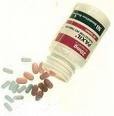 study, scientists discovered that when they blocked the formation of new neurons in the hippocampus brain region, behavioral effects of the antidepressant Prozac [Fluoxetine] were diminished.
study, scientists discovered that when they blocked the formation of new neurons in the hippocampus brain region, behavioral effects of the antidepressant Prozac [Fluoxetine] were diminished.Research has already understood that depression, stress, and anxiety disorders can cause death of neurons in the brain. More studies have demonstrated that most other antidepressants on the market can and will trigger the growth of new neurons. Even more interesting is the fact that besides humans, adult animals grow new neurons when given antidepressant drugs.
Though there are many other interactions in the brain with antidepressants, their primary beneficial effect from them is derived from their ability to produce neurogenesis. Now if scientists can only figure out a way to induce the amount of neurogenesis that antidepressant medication does without creating a new drug!
5. An Enriched Environment
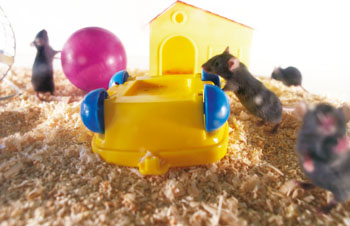 Science has long known that living in a mentally stimulating environment vs. an impoverished environment is far better for brain development. Research has found that exposure to an enriched environment enhances neurogenesis functioning and is able to regulate emotionality.
Science has long known that living in a mentally stimulating environment vs. an impoverished environment is far better for brain development. Research has found that exposure to an enriched environment enhances neurogenesis functioning and is able to regulate emotionality.Scientists have found that memory-based tasks were far improved in the hippocampus region of the brain when human beings are raised in a healthy, enriched environment. One study found that mice put in stimulating environments actually had larger hippocampus regions than did those living in “standard” or “poor” laboratory conditions. They discovered a direct correlation between an enriched environment and the amount of neurons produced in the brains of mice. This had a significant effect on neurogenesis!
6. The Act of “Learning”
 Though scientists have long known that new brain cells are able “enhance learning” - they never thought that “learning” could actually cause the birth of new brain cells… that is, until recently. In recent animal studies, researchers have found that there was a direct relationship between “learning” and the survival rate of newly-birthed brain cells.
Though scientists have long known that new brain cells are able “enhance learning” - they never thought that “learning” could actually cause the birth of new brain cells… that is, until recently. In recent animal studies, researchers have found that there was a direct relationship between “learning” and the survival rate of newly-birthed brain cells.When researchers taught certain rodents a wide-variety of cognitive tasks which involved a wide-range of brain areas - scientists found that the more the animal “learned” - the more new neurons were able to survive in the hippocampus. Scientists have made it clear that “learning” can increase the presence of new neurons in the brain.
Brain cells that are born in the hippocampus, which normally die off, are literally “rescued” by “learning” experiences. There is still plenty of research being conducted in this area and not all sources agree. However, your best bet is to keep your brain power boosted and your mind sharp. Always try to learn something new!
7. Restricting Caloric Intake
The phenomena of calorie restriction has continued to puzzle researchers. They have found that eating less food can lead to significant increases in longevity. Even when starting calorie restriction in middle age, it is able to produce around a ten to twenty percent increase in life-span. It has also been associated with hundreds of biological changes and can harbor our ability to produce new brain cells.Restricting calorie intake has been associated with increases in neurogenesis and a better overall neuroprotective effect in the brain. Scientists have found that calorie-restricted animals nearly always stay active and healthy up until the end of their lives’. This phenomena has also been associated with a significantly lowered likelihood of developing a degenerative brain disease and can even produce new nerve cells!
GHSBHHV16450448
Subscribe to:
Posts (Atom)











